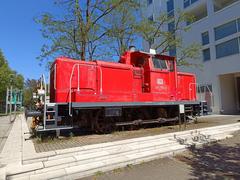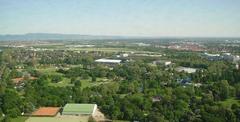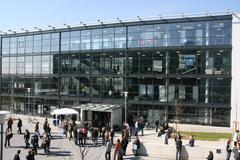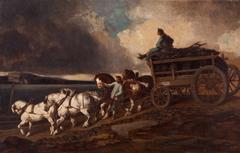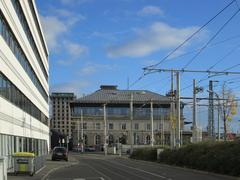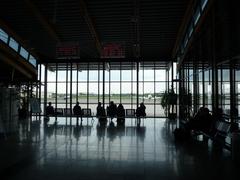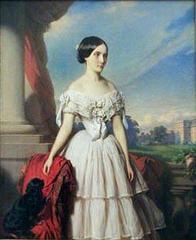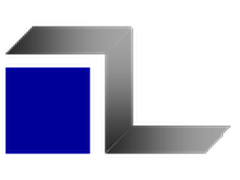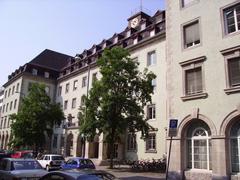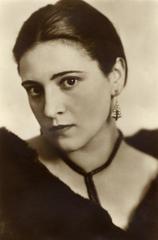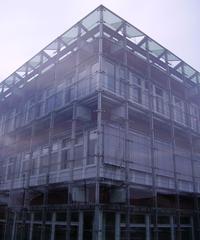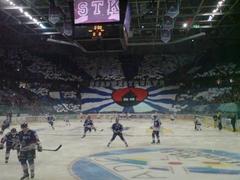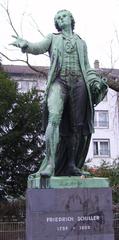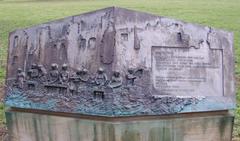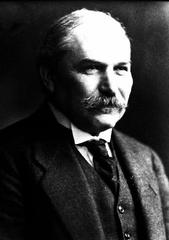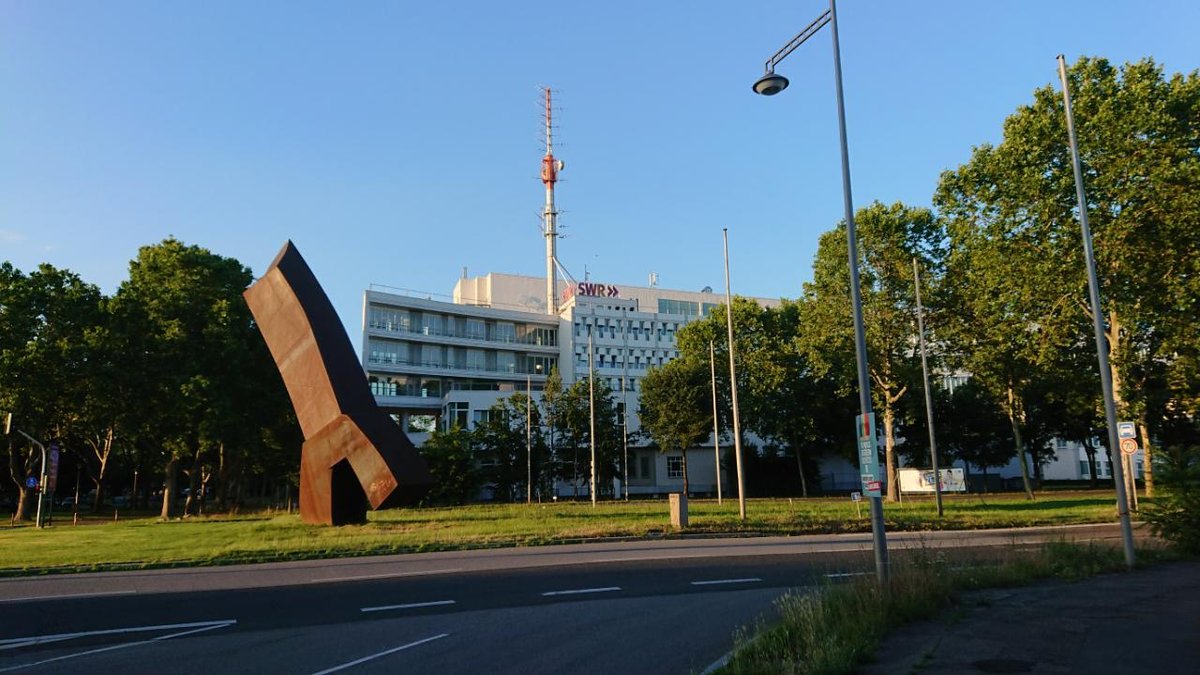
Technoseum Mannheim: Visiting Hours, Tickets, and Historical Sites Guide
Date: 14/06/2025
Introduction: The Significance of Technoseum Mannheim
Located in the heart of Mannheim, Germany, the Technoseum is a premier museum dedicated to two centuries of technological and industrial history. Established in 1990 as the Landesmuseum für Technik und Arbeit, the museum spans over 9,000 square meters, featuring a vast collection of around 170,000 artifacts—including working steam engines, historic printing presses, early automobiles like Carl Benz’s first motorcar, and a remarkable array of media and communication devices.
Designed by renowned architect Ingeborg Kühler, the Technoseum’s modern, terraced structure of glass and steel offers a unique, chronological journey across six floors. The museum’s innovative layout and hands-on “Elementa” science stations provide engaging learning experiences in physics, mechanics, and digital technology. As the museum undergoes a thematic reorganization (to be completed by 2030), it remains at the forefront of exploring how technology has shaped and continues to influence society.
With live demonstrations, interactive workshops, and rotating special exhibitions like “Spiel mit! Bauen – Zocken – Knobeln,” the Technoseum appeals to families, students, and technology enthusiasts. Its prime location near Mannheim’s main train station, the Baroque Palace, and Luisenpark makes it easily accessible. Facilities include wheelchair access, a café, and a museum shop.
For the latest visiting hours, ticket prices, and event schedules, consult the Technoseum official website and reputable regional guides (brald.com, swr.de). This guide compiles essential information to help you plan and enjoy your visit to one of Mannheim’s most significant historical sites.
Table of Contents
- History and Development of the Technoseum
- Architectural Highlights
- Exhibition Concepts and Innovations
- Key Collections and Focus Areas
- Practical Visitor Information
- Nearby Attractions
- Frequently Asked Questions (FAQ)
- Conclusion and Visit Planning Tips
- References
History and Development of the Technoseum
Originally founded as the “Landesmuseum für Technik und Arbeit” in 1990, the Technoseum was envisioned as a space to document and present the economic and societal changes brought about by industrialization in southwestern Germany (brald.com). The museum’s establishment was driven by a desire to make the region’s technological evolution accessible and understandable to the public.
Over the years, the Technoseum has expanded and updated its permanent exhibitions, keeping pace with advances in science and technology (regioactive.de). In 2010, the museum adopted its current name, “Technoseum,” reflecting a broader, more contemporary approach to technology and society (radiomuseum.org).
Architectural Highlights
The building, designed by Ingeborg Kühler, is a striking example of modern museum architecture. Its elongated, terraced form blends function with a futuristic aesthetic, and the extensive use of glass and steel creates an open, light-filled environment (brald.com). Visitors follow a two-kilometer route through six floors, with the open layout enabling the display of large-scale machines in working order (regioactive.de).
Exhibition Concepts and Innovations
The Technoseum’s exhibitions differ from traditional technology museums by intertwining technical history with social and economic developments. The core permanent exhibition guides visitors chronologically through industrialization, but a thematic reorganization is underway to focus on areas such as mobility, communication, media, and medical technology (swr.de).
Interactivity is central to the museum experience: historical machines are operated live, and the “Elementa” science stations allow guests to experiment with optical, mechanical, and electronic inventions (regioactive.de). The museum’s narrow-gauge railway, the “Eschenau,” takes visitors directly from the building into the museum park.
Key Collections and Focus Areas
With approximately 170,000 objects, the Technoseum’s collections cover steam engines, weaving machines, printing presses, vehicles, and more. Special emphasis is placed on the industrialization of southwestern Germany and the evolution of communication and media technologies.
A notable highlight is the acquisition of one of Europe’s largest broadcasting history collections, including 5,800 objects from the SWR and Deutsches Rundfunkarchiv, such as vintage cameras, recording devices, and a complete 1960s radio studio (radiomuseum.org).
Practical Visitor Information
Visiting Hours
- Tuesday to Sunday: 10:00 AM – 6:00 PM
- Monday: Closed
- Public Holidays: Check official website for variations
Ticket Prices
- Adults: €12.00
- Children (6+) / Students / Reduced: €9.00
- Children under 6: Free
- Family Ticket: Available
- Group Discounts: Available on request
Tickets are available at the entrance or online via the Technoseum website.
Getting There & Accessibility
- Address: Museumstraße 1, 68165 Mannheim, Germany
- Public Transport: Tram/bus stop “Luisenpark/Technoseum” (trams 6, 9)
- By Car: Parking available next to the museum; spaces fill up quickly on weekends
- Cycling: Bike racks at entrance, accessible by city cycling routes
The museum is fully wheelchair accessible with ramps, elevators, and accessible restrooms (Technoseum accessibility info). Wheelchairs are available for loan.
Guided Tours and Events
- Guided Tours: Available in German, English, and French for groups and individuals (book in advance)
- Workshops: Family-friendly workshops, school programs, and birthday parties
- Special Events: Thematic exhibitions, International Museum Day (“Pay What You Want” admission), and more (AllEvents listing)
Amenities
- Café: Hot meals, snacks, vegetarian and vegan options
- Museum Shop: Science kits, books, Mannheim souvenirs
- Wi-Fi: Free throughout the museum
- Lockers: Available near the entrance
- Baby Facilities: Changing stations and family rest areas
Nearby Attractions
Combine your Technoseum visit with other Mannheim highlights:
- Luisenpark: Adjacent, one of Germany’s most beautiful urban parks
- Baroque Palace: Major historical site, nearby
- Kunsthalle Mannheim: Art museum within easy reach For more, see the Mannheim city tourism portal.
Frequently Asked Questions (FAQ)
What are the Technoseum’s opening hours?
Tuesday to Sunday, 10:00–18:00; closed Mondays and select holidays.
How much do tickets cost?
Adults €12, reduced €9, children under 6 free. Family and group rates available.
Is the museum accessible for people with disabilities?
Yes, full wheelchair access and adapted facilities.
Are guided tours available?
Yes, in several languages and for different age groups (advance booking recommended).
Can I take photos inside?
Photography is allowed for private use; check for restrictions during live demonstrations.
Is the museum suitable for children?
Yes, with interactive exhibits, workshops, and family-oriented activities.
Conclusion and Visit Planning Tips
The Technoseum Mannheim offers a unique blend of historical depth, interactive learning, and architectural beauty. Visitors of all ages can explore the evolution of technology, experience live demonstrations, and engage with hands-on exhibits such as the “Elementa” science stations. With its accessible facilities, digital resources like the museum app, and proximity to other cultural landmarks, the Technoseum is a top destination for anyone interested in the connections between technology, society, and history.
For the best experience:
- Check opening hours and ticket options in advance (Technoseum official site)
- Arrive early, especially on weekends or holidays
- Allow 3–4 hours for your visit to explore all exhibitions
- Use the Technoseum app for interactive maps and updates
- Pair your trip with nearby attractions like Luisenpark
Experience Mannheim’s technological heritage—plan your visit today!
References
- brald.com – Visiting the Technoseum Mannheim: Hours, Tickets, History, and Attractions
- swr.de – Technoseum modernization and thematic restructuring
- regioactive.de – Technoseum museum overview and visitor information
- radiomuseum.org – Technoseum collections and broadcasting history
- Technoseum official website – Visiting the Technoseum Mannheim: Hours, Tickets, Exhibits, and Tips
- Tourispo – Technoseum visiting hours and ticket details
- Technoseum.de – Technoseum official visitor information
- Technoseum accessibility and facilities
- Mannheim city cultural venues guide
- AllEvents – International Museum Day at Technoseum


